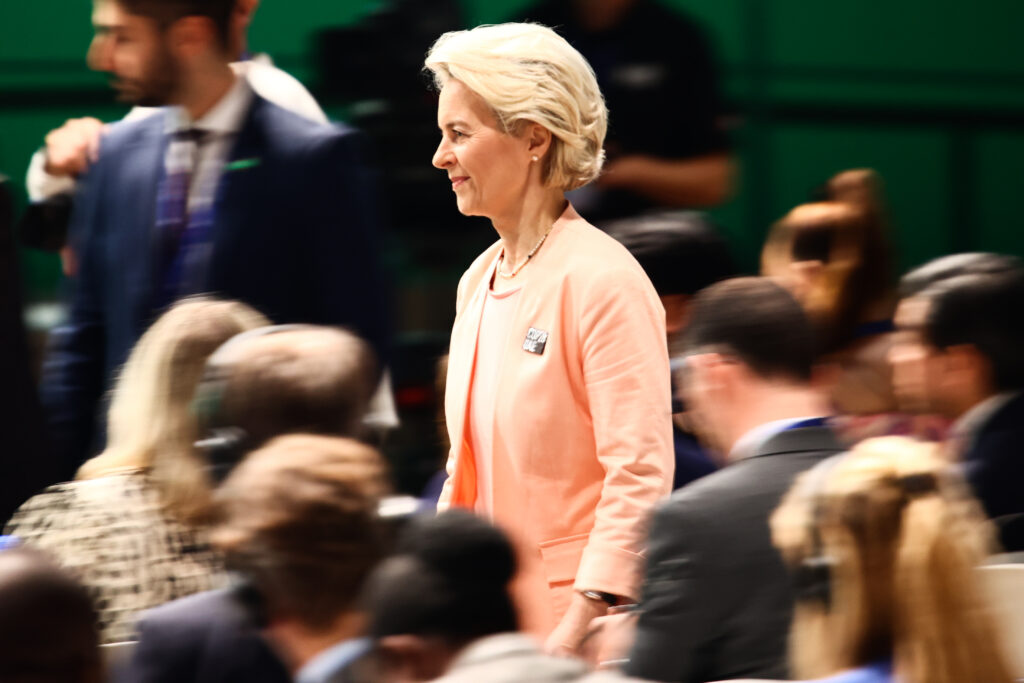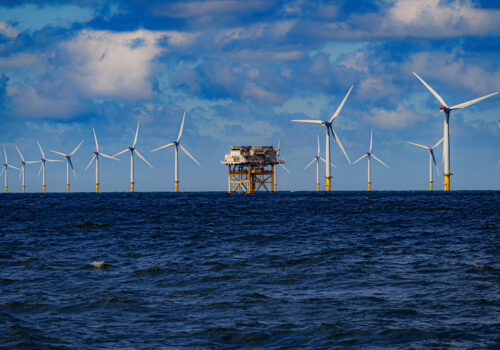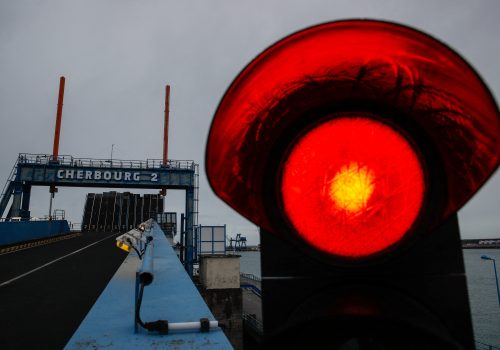When Ursula von der Leyen arrived in Brussels in 2019, the mood radically changed in the Berlaymont building, the headquarters of the European Commission. Although elected as commission president with a paper-thin majority after a difficult final year as German defense minister under then Chancellor Angela Merkel, she quickly set to work. Four years on, von der Leyen is widely regarded as the most powerful president of the European Commission since Jacques Delors left office in 1995, with von der Leyen having put forward Europe’s “man on the moon” moment, the European Green Deal. As her first term comes to an end in 2024, her Commission leaves a landmark legacy for clean energy, and reports indicate that she will soon announce a re-election bid. If it comes to pass, expect a second-term von der Leyen Commission to focus more on implementing major policies rather than announcing new ones—as well as navigating the increasingly choppy waters of European climate politics.
Von der Leyen’s election and her development of a European Green Deal came on the eve of multiple crises that would shape not just Europe’s trajectory on decarbonization, but its strategic defenses as well. Mere months after her election, the European Union (EU) began to face the COVID-19 pandemic’s health and economic crises. After pandemic recovery plans were shifted toward clean energy-oriented growth under instruments such as NextGenerationEU in 2021, Russia launched a full-scale invasion of Ukraine and weaponized European gas supplies the following year. Russia’s aggression led to a severe energy crisis across the continent, with electricity prices soaring and observers worried that all these factors were combining into existential threats that Europe had not faced since 1945. Compounding matters, Europe was squeezed in an intensifying competition between the United States and China, with Washington passing the Inflation Reduction Act (IRA) in 2022 with potentially significant effects for European industry and competitiveness.
The European Green Deal is the first comprehensive plan to make an entire continental union achieve net-zero emissions by 2050.
In this context of exponentially growing danger to Europe, the von der Leyen Commission achieved an impressive record for progress toward the clean energy transition. The European Green Deal is the first comprehensive plan to make an entire continental union achieve net-zero emissions by 2050. To achieve the transition to net-zero emissions, the European Green Deal pushed emission reduction targets, expanded Europe’s Emissions Trading System, and launched a series of clean technology programs, especially on hydrogen, offshore wind, and energy storage. The subsequent reorientation of NextGenerationEU funding from pandemic recovery to clean energy investments in 2021, as well as the concurrent (and ongoing) drafting of the Green Deal-linked Fit for 55 legislative package that introduced the Carbon Border Adjustment Mechanism, have already accelerated Europe’s emission reduction policies. After Russia launched its full-scale invasion of Ukraine, the Commission introduced the REPowerEU Plan to reduce European consumption of Russian fossil fuels, notably doubling solar capacity and heat pump installations and prioritizing other investments into renewable energy sources. By the metrics released by the Commission in mid-2023, there has already been at least a 20 percent reduction in energy consumption across the bloc because of increased energy efficiency and lowered demand (partly due to government intervention). There was an additional 39 percent of the energy produced in the EU coming from renewable sources as well.
Despite these achievements, significant work remains on reducing EU carbon emissions. For one, out of the seventy-five pieces of Fit for 55 legislation, only thirty-two have been adopted, with another sixteen in final negotiations. A further twenty-one are still up for debate in the European Parliament, with six not even tabled for discussion. Other projects have failed to take off entirely, such as the Sovereignty Fund that the Commission floated as one of several responses to the IRA. In fact, as net-zero policy becomes an increasingly competitive economic race, the EU has yet to fully define its stance toward China and the United States. So far, it is unclear how, where, and when Europe should protect its industries.
Given such a record, if von der Leyen were to launch and win a re-election bid, Europeans should expect more of an emphasis on executing all these existing proposals, rather than the announcement of new ones or any U-turns. The European Climate Neutrality Observatory has argued that much of the new legislation and reforms the von der Leyen Commission introduced have created the institutional framework for vital climate action, but that their implementation remains far too slow, partially due to a lack of financial support for a larger-scale adoption of clean energy technologies. Von der Leyen herself seems aware of this shortcoming; in her September 2023 letter to the incoming European Commissioner for Climate Action Wopke Hoesktra, her primary instruction was clear: implement, implement, implement. Even the Green Deal, the first major proposal of the von der Leyen Commission, is far from being finalized, as the ongoing legislative processes attest. Recent agreements on electricity market reform, industrial emissions, and new rules for hydrogen investments are necessary steps in that direction.
On trade and the protection of Europe’s industries, the European Commission will have to outline more specific plans beyond the recent probes into Chinese practices the Commission just announced. However, the Net-Zero Industry Act, one of Europe’s answers to the IRA, has yet to put any new funding on the table.
The next Commission will have to navigate another momentous challenge: enlargement. As Ukraine and ten other countries vie for EU accession, Europe’s unity, resolve, and ability to see its decarbonization goals through could once again be challenged as new members join the fold, even though this enlargement will likely not happen before 2030. On top of that, the EU’s existing enforcement of climate targets and other key decarbonization deliverables is lacking as well, leading to inconsistent approaches between the existing EU members themselves.
The final, and possibly most difficult, predicament will be staying the course. Even as pressure continues to build on the European Commission to retain its momentum, policymakers should not underestimate the continued strength of climate-skeptic populist movements in European politics. The anxieties of continued economic decline and worries over increasing migration remain prevalent among significant parts of the European electorate, which could politically bolster the populists and threaten existing momentum on decarbonization and the energy transition.
Consequently, only two things can be said for certain about the next European Commission. The first is that it will have its work cut out for it, with these crises unlikely to dissipate within the next five years. The second is that whoever succeeds von der Leyen, whether it be in 2024 or in 2029, will have large shoes to fill when it comes to making progress toward reaching net-zero emissions.
Francis Shin is a research assistant in the Atlantic Council’s Europe Center.
Théophile Pouget-Abadie is a nonresident fellow with the Atlantic Council’s Europe Center and a policy fellow with the Jain Family Institute, focusing on decarbonization, the energy transition, and European policy.
Further reading
Thu, Jan 25, 2024
How Europe can escape its structural energy weakness amid great power competition
Report By
This report argues that the EU will need to engage in deep structural and political reforms to reduce its reliance on fossil fuels.
Wed, Jan 17, 2024
Even as Brexit awkwardness remains, the UK and EU should work together on decarbonization
New Atlanticist By Francis Shin
Brexit was four years ago, but London and Brussels need to take decisive steps together toward decarbonization as the climate crisis escalates.
Fri, Dec 15, 2023
The EU needs a buyers’ club for critical minerals. Here’s why.
New Atlanticist By Nicole Lawler, Francis Shin
The EU should invite allies and partners to participate in what would primarily be a buyers’ cartel that would pool investment and facilitate coordination of market behavior among members.
Image: Ursula von der Leyen during the United Nations Climate Change Conference COP28 High Level Segment meeting in Dubai, United Arab Emirates on December 1, 2023. (Photo by Jakub Porzycki/NurPhoto)



